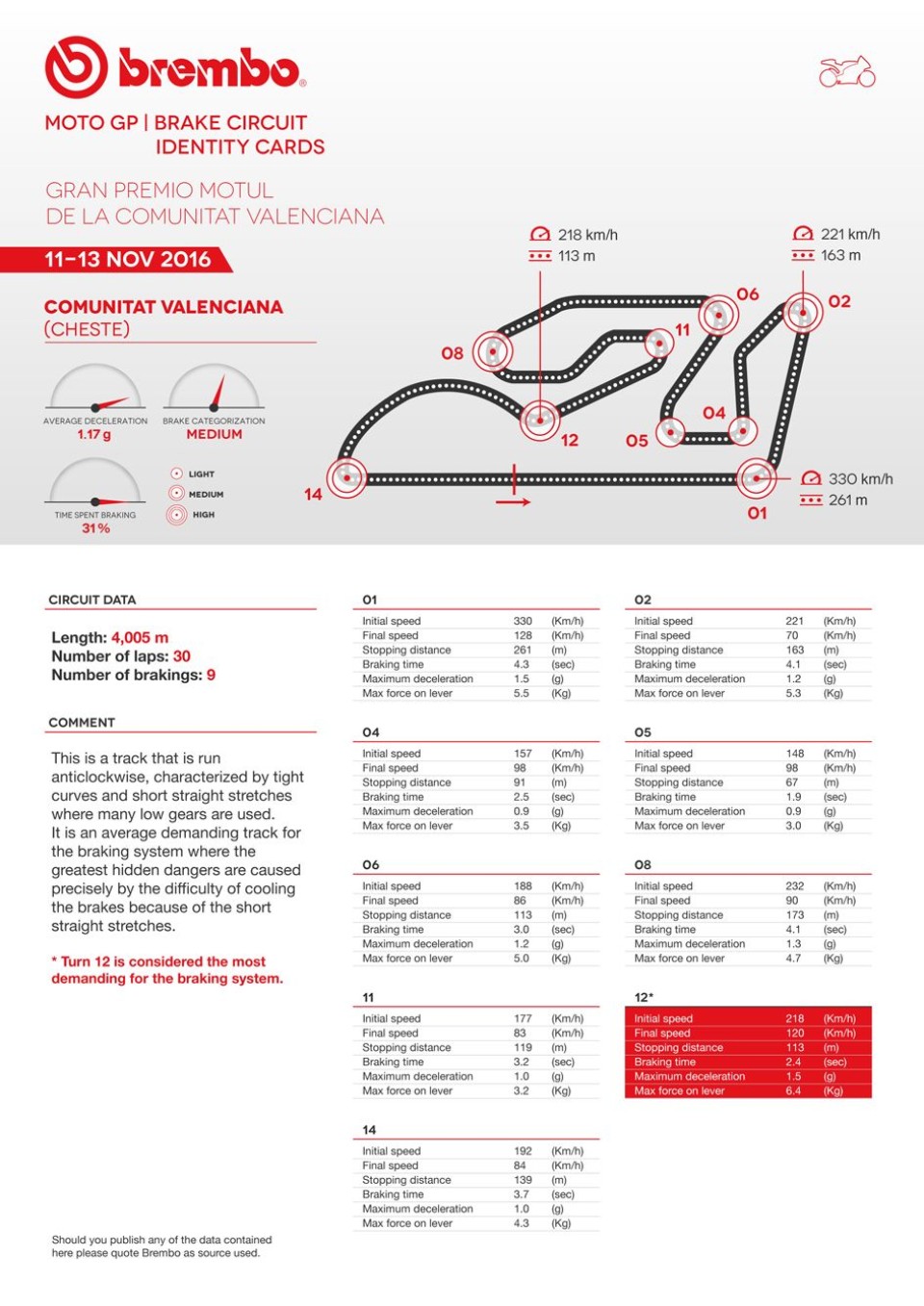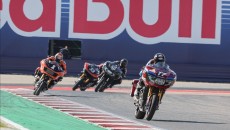The Circuit de la Comunitat Valenciana Ricardo Tormo will host the 18th and final appointment for the 2016 MotoGP World Championship from 11 to 13 November. Inaugurated 19 September 1999, the track was named for Ricardo Tormo Blaya, the first Valencian World Champion in the world of motorcycle racing.
The Valencian circuit, which has been used for the Motorcycle Grand Prix since 1999, is approximately 4 km long and is unique in that it runs counter-clockwise. The track features tight curves joined by short straightaways where low gears are used extensively. It's no surprise that the average lap speed is the lowest in the championship: the lap record of 160.1 km/h pales in comparison with the 186.9 km/h achieved at the Autodromo del Mugello and at the Red Bull Ring.
According to Brembo technicians, who work with all MotoGP riders (Brembo supplies 100% of riders in the premium class), the Circuit de la Comunitat Valenciana Ricardo Tormo is considered of average difficulty for the brakes. On a scale of 1 to 5 it earned as difficulty index of 3, the same as 8 other circuits, including the 2 Italian circuits. Interestingly, the other 3 Spanish circuits all ranked as more difficult.
Brake use during the GP - The short straightaways, the longest is only 876 metres, don't allow the brakes to cool much. What's more, the brake system is used for over 29 seconds each lap, which comes to a little more than 31% of the total racing time.
At 1.16 g, average deceleration is not particularly significant. Frequent use of the brakes accounts for the impressive total value of all the forces exerted by the rider: the total of all the loads put on the brake lever by a single rider from the start of the race to the finish line comes to well over 1,200 kg, which is equivalent to the total weight of 19 MotoGP riders.
The most challenging stops - Of the 9 braking sections on the Circuit de la Comunitat Valenciana Ricardo Tormo none are considered highly challenging, while 6 are of average difficulty and 3 are light. The most challenging curve is the first, named after 4-time World Champion Jorge "Aspar" Martinez: MotoGP bikes arrive at 330 km/h and brake for 4.3 seconds to enter the curve at 128 km/h. During this session, riders exert a 5.5 kg load on the brake lever. The braking distance is 261 metres, practically twice the length of the Pont de l’Exposició.
Riders need to exert a greater force for curve 12, renamed for "Champi" Herreros, the last World Champion for the 80 cc class before it was abolished. The load on the lever is 6.4 kg. However, riders only brake for 2.4 seconds as they drop from 218 km/h to 120 km/h: the bikes travel 113 metres over this brief interval, just a little less than the length of 5 of the boats used for the 2007 America's Cup in Valencia. The least demanding braking section is at curve 5: it only takes 1.9 seconds and 67 metres to drop from 148 km/h to 98 km/h.
Brembo victories - Bikes equipped with Brembo brakes have won all 17 of the Valencian Community premium class GPs hosted so far. The first to win was Regis Laconi riding for Yamaha in 1999. Jorge Lorenzo and Dani Pedrosa are tied for the most victories with 3 MotoGP victories each. Valentino Rossi has triumphed 2 times, but his last victory dates to 2004.









